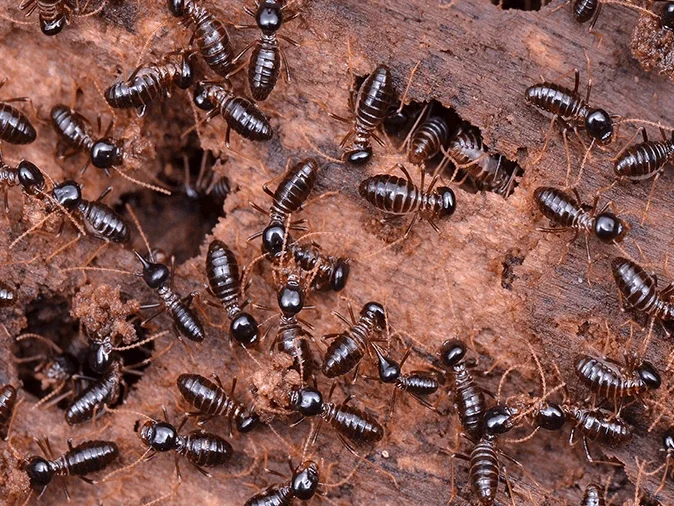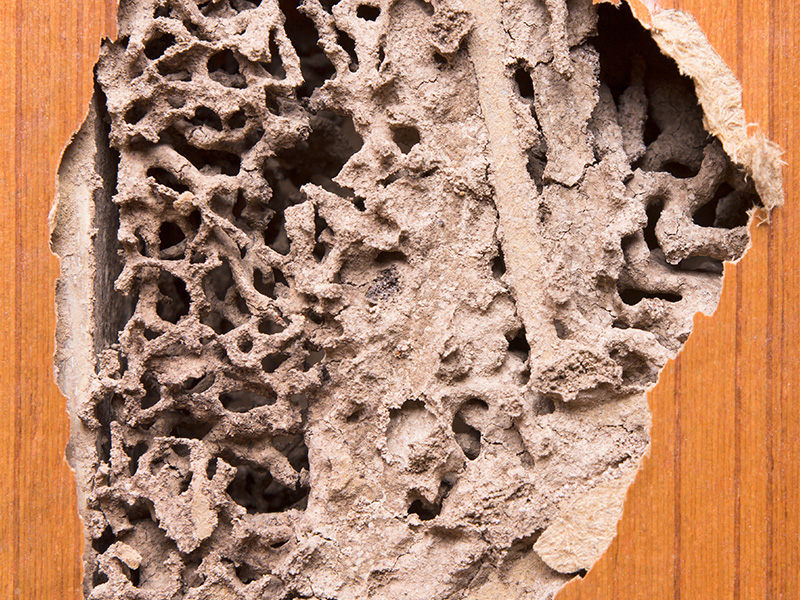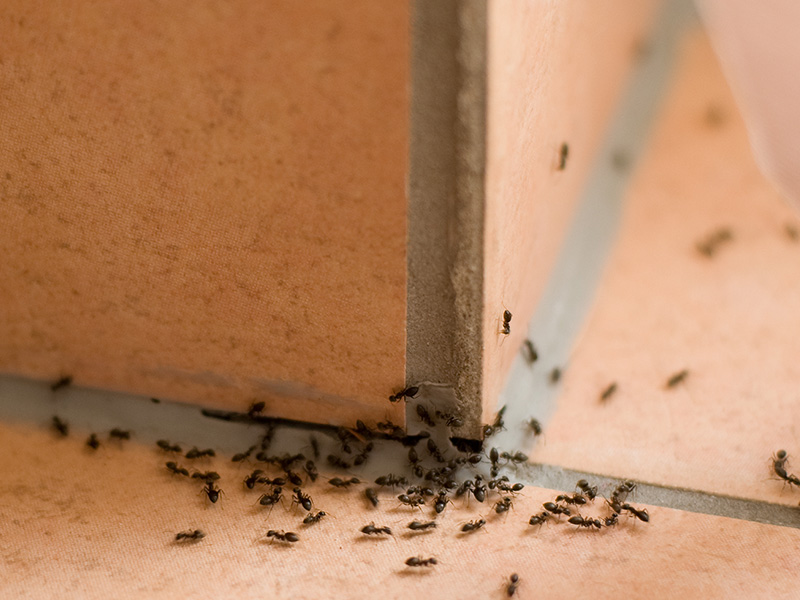
What do Western subterranean termites look like?
Like drywood termites that have three different caste systems, Western subterranean termite colonies are made up of workers, soldiers, and reproductives. Workers are similar looking to ants but are white or creamy colored. Soldiers are orange in color and distinguished by their rectangular shaped heads and large pincher-like mouthparts. Swarmers, the members of the termite colony that are responsible for mating and establishing new colonies, dark brown, winged insects.
When are western subterranean termites most active?
Life cycle of Western subterranean termites
Gradual metamorphosis
Termites are social insects living in colonies with a caste system including reproductives, workers, and soldiers. Termites exchange pheromones to aid in colony communication and determining caste upon need. Completion of caste roles is essential to the survival of a colony.
Winged forms leave an existing colony in a large mass. 3% survive and submerge back into the soil to begin developing a new colony. The queen deposits and cares for eggs.
As colonies become established, workers forage for food and bring back and feed colony members through trophallaxis. Soldiers guard opening in the gallery and protect colony members from predators like ants. Secondary Reproductives help to care for eggs and egg production when colony mature. Workers make up most of the colony population.
Habits of Western subterranean termites
- Diet: Wood, especially cellulose portion
- Activity: Constantly active
- Preferred Climate: Temperate climates
- Defense: Soldiers defend, pheromone communication
- Cautions: Can cause costly destruction to structures
- Home Invasion: May see mud tunnels or tubes coming from the soil or inside structures going along walls or from the ceiling. May also see clusters of wings lying on the ground indicating alates have recently submerged beneath the surface to begin a colony.
Are Western subterranean termites dangerous?
Termite populations can cause severe damage to homes but are not known to bite humans. Essentially termites will bite wood and attack other insects but not people.
Where do Western subterranean termites nest?
Nests of this termite are typically located below the soil and are interconnected by a network of underground tunnels.
Helpful hints for Western subterranean termites
To prevent termite infestations, we recommend the following tips:
- Eliminate moisture sources near your structure
- Check for leaky pipes often
- Keep untreated wood away from structures on your property
- Put in place a pest control plan that targets termites
Interesting facts about Western subterranean termites
When adjusted for inflation, termites cause more than $6 billion in damage each year in the U.S.
How do you get rid of western subterranean termites?
To exterminate termites that have infest homes and buildings in Phoenix, Tucson, and Southern Arizona, Northwest Exterminating’s termite control services are the best choice. Contact us today to find out how we can help you get rid of these wood-destroying insects!

Testimonials
Request Your FREE Estimate
Have questions or need help getting rid of termites or other pests? Simply complete the form below or give us a call!



